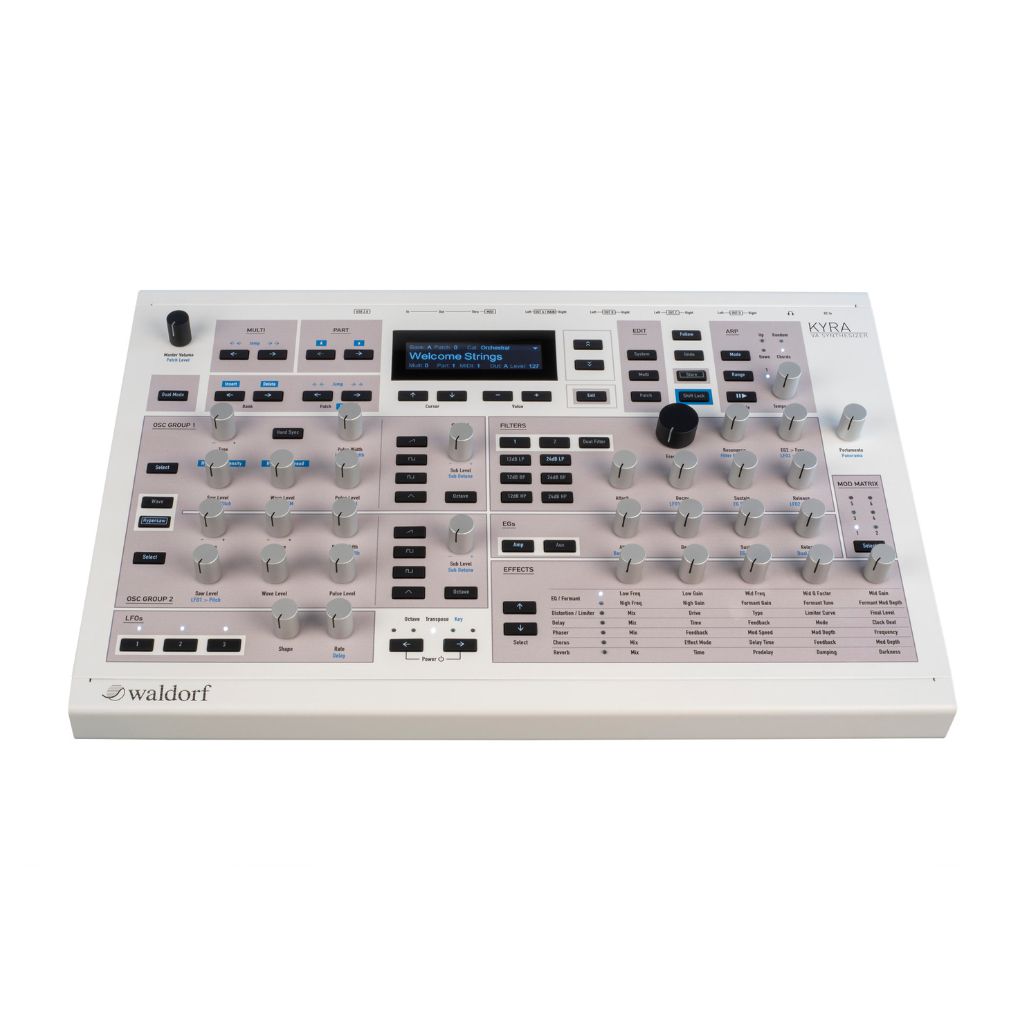Review: Waldorf Kyra
With all this talk of analogue synths, it’s easy to forget that virtual analogue has loads to offer, way beyond basic waveform stylings. Waldorf debut a highly impressive contender for the VA crown.
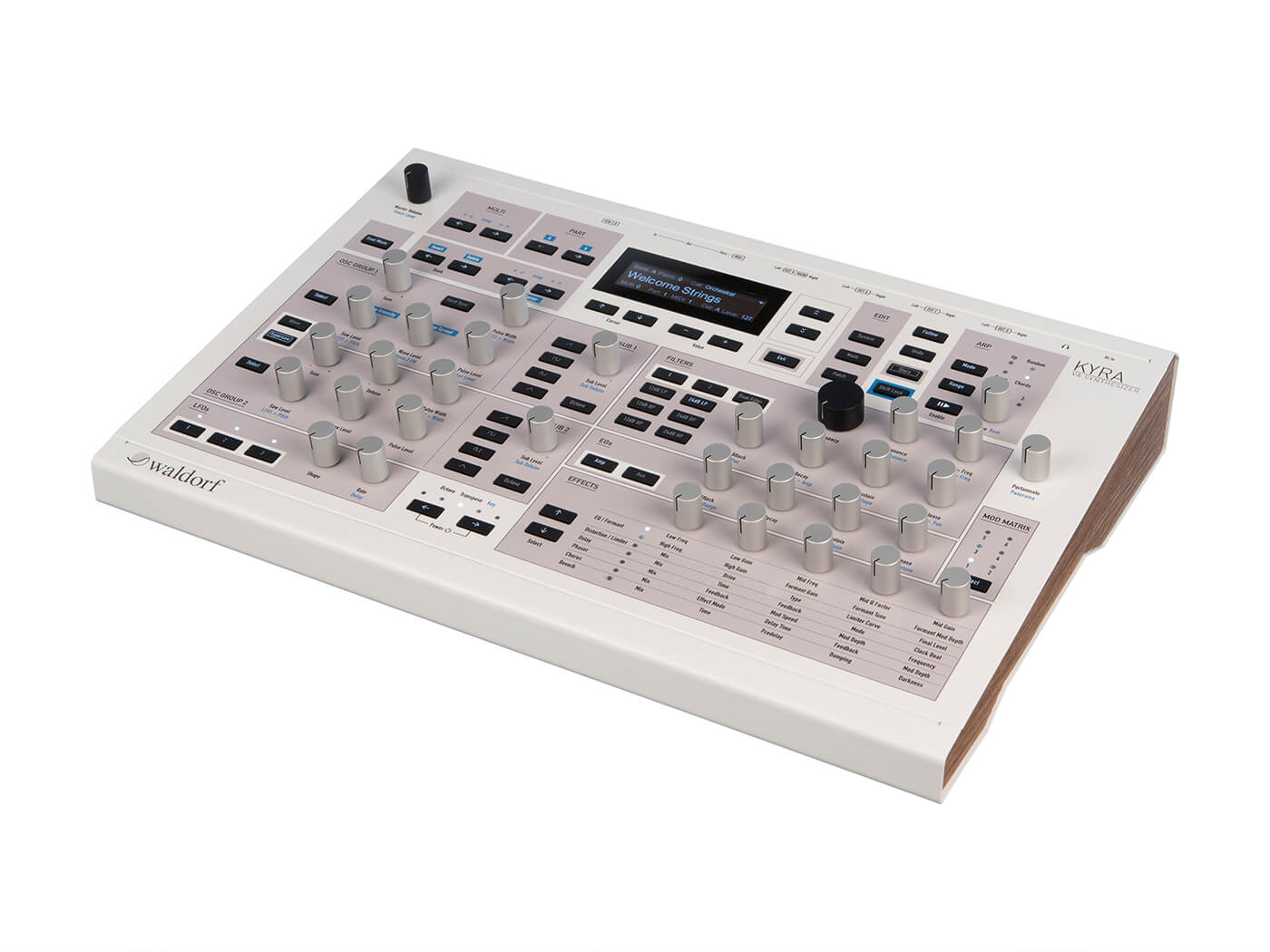

Price £1749.00 (Street Price)
Contact Waldorf | Hand In Hand
If there’s one company that has a slight sense of the diverse, it’s Waldorf. With a legacy that extends back to PPG (the company that innovated and packaged the notion of the wavetable synthesizer), it’s hardly surprising that this sense of intriguing innovation resulted in one of the most sought after synths of recent times, in the shape of the Quantum. With its elegant interface, married with a large element of knob-per-function control, the Quantum has been hailed as something of a trailblazer, not least of all by us at MusicTech. So with a similar sense of anticipation, the Kyra is different and innovative yet again, with a unique sound engine which is heralded as the first of its kind.
The future sounds of Germany
The Kyra is a fairly hefty piece of desktop kit, in a keyboardless form, that’s going to take up a fair slab of desk space. Its 440x300mm chassis is a full metal design with the exception of the rather beautifully matched wooden end-cheeks, which are inset. It’s got substantial weight too, which might be partly due to the metal casing, with pots that feel substantial and very securely mounted.
The Kyra actually started life a few years ago without Waldorf involvement, first being shown as a prototype at Musikmesse. It’s probably fair to say that one of the points that will have piqued the interest of Waldorf will have been the notion that it is reputed to be the first synth to take advantage of FPGA technology, which is an integrated circuit design that may be programmed by a third party, offering flexible use coupled with very fast response in operation. This makes it ideal for certain applications. According to Waldorf, it means that you get a synth which is as powerful as a soft-synth, but in a format that is stable, reliable and quick, without the need for cooling fans and long boot times. This makes it ideal for both live and studio work, where its reliability could be something of a lifesaver.
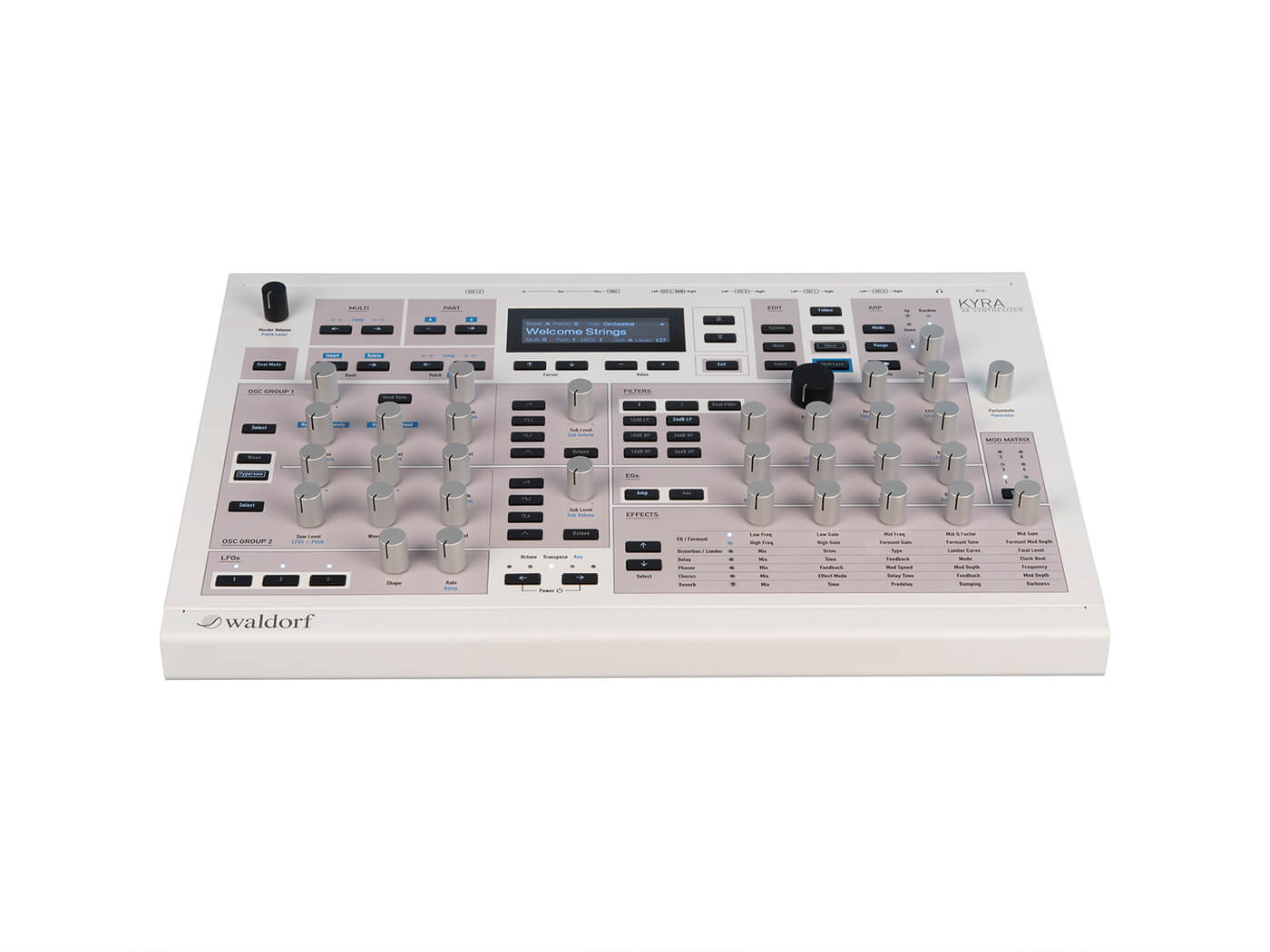
Familiarity in architecture
Despite the underlying technology, there is plenty of familiarity to be found, although it’s important to emphasise that this is firmly a synth which is virtual analogue in form, with no analogue sound theatrics anywhere on board, and that includes the filter section, where Waldorf has form for using analogue circuits. This should not put you off in any way, as there is plenty to shout about, but before we get embroiled with the sound architecture, let’s consider the stats.
Kyra is an eight-part multi-timbral synthesizer, with an abundant voice count of 128 voices, although there is a restriction of 32 voices per part, which is pretty generous and shouldn’t find any release tails being cut short when deployed for real-world usage. Each part is addressed via MIDI, either through conventional MIDI sockets or USB 2.0, with the added bonus that the USB interface acts as a class-compliant audio interface too, making it elegantly easy to supply audio to a DAW, if so desired. Class-compliancy currently only extends to Apple Mac’s, however the installation of a driver will allow Windows users to join the USB audio party.
If you prefer being more traditional, Kyra also boasts four assignable balanced stereo outputs, allowing for desired routings in the time-honoured capacity. A dedicated headphone output mirrors the audio from the first stereo pair.
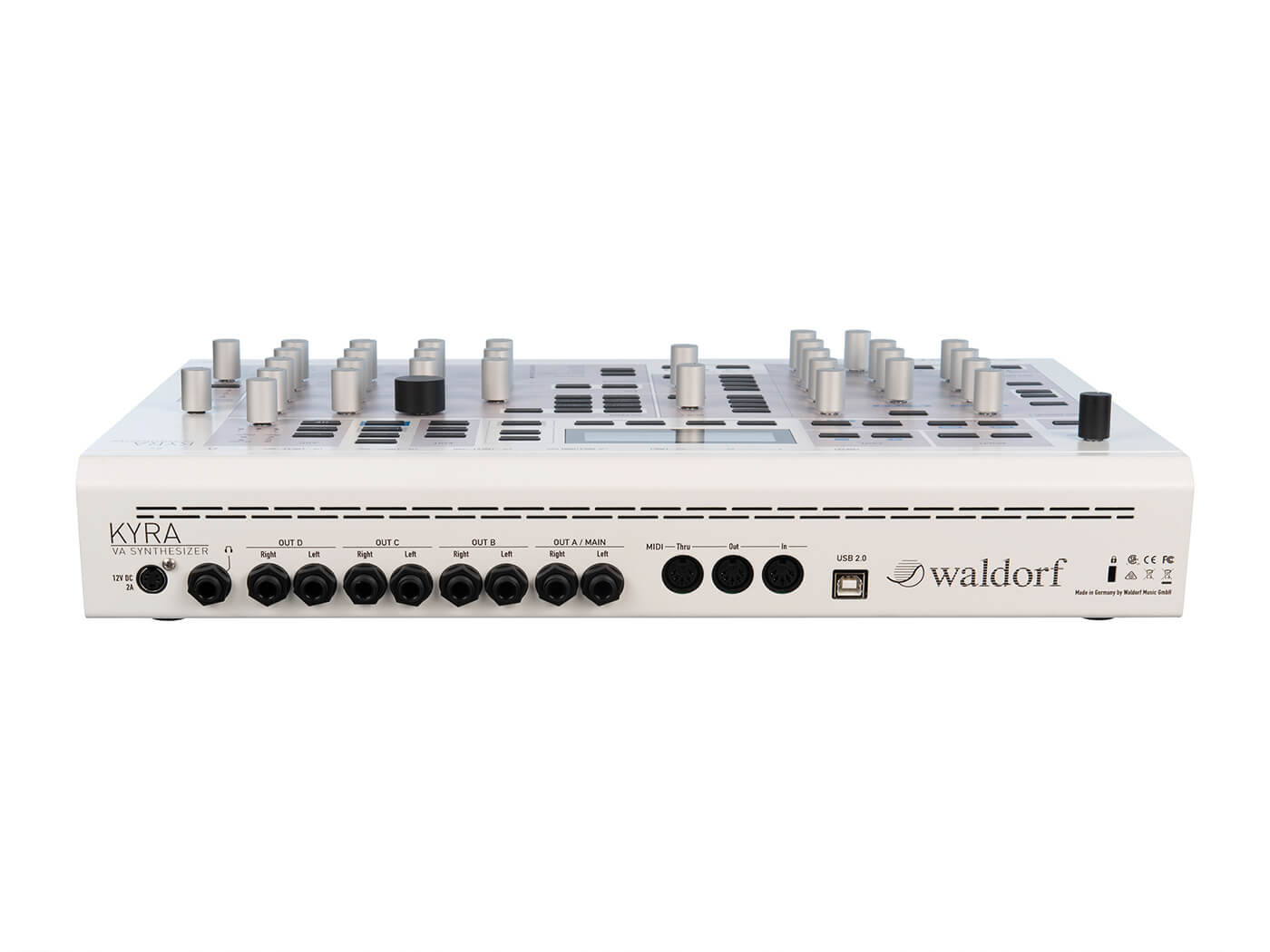
Much of the Kyra is laid out to a fairly obvious knob-per-function construct, with a Shift Lock button allowing for both toggling and access to further functions, which are clearly highlighted in blue across the front fascia. The beautifully crisp OLED display further endorses what’s going on by immediately jumping to the parameter being tweaked, with an elegant scrolling display.
Upon power up, I become aware of a couple of interesting points; firstly, there is no power button, at least in the traditional sense, meaning that you could consider the Kyra to be in a slightly comatose state until a pair of buttons at the bottom of the panel are pressed to begin its very fast startup routine. There’s also no value pot in favour of value buttons, which are located directly below the display. Patch Inc/Dec buttons are located to the left-hand side of the screen, where two part buttons point left and right, so you increase the patch number with a right button press. This feels ever so slightly counter intuitive, but as with all notions of muscle memory, it’ll become instant enough with familiarity and use.
Auditioning the first few factory installed patches, and you’re hit by a substantial breadth of sound, not uncommon bedfellows with the super-saw styled synths from Roland and Access. It has a sharpness and clarity of sound that brings forth commercial credentials that will make it cut through a mix like a knife, while also sounding massive, which leads nicely to its building blocks of sound.
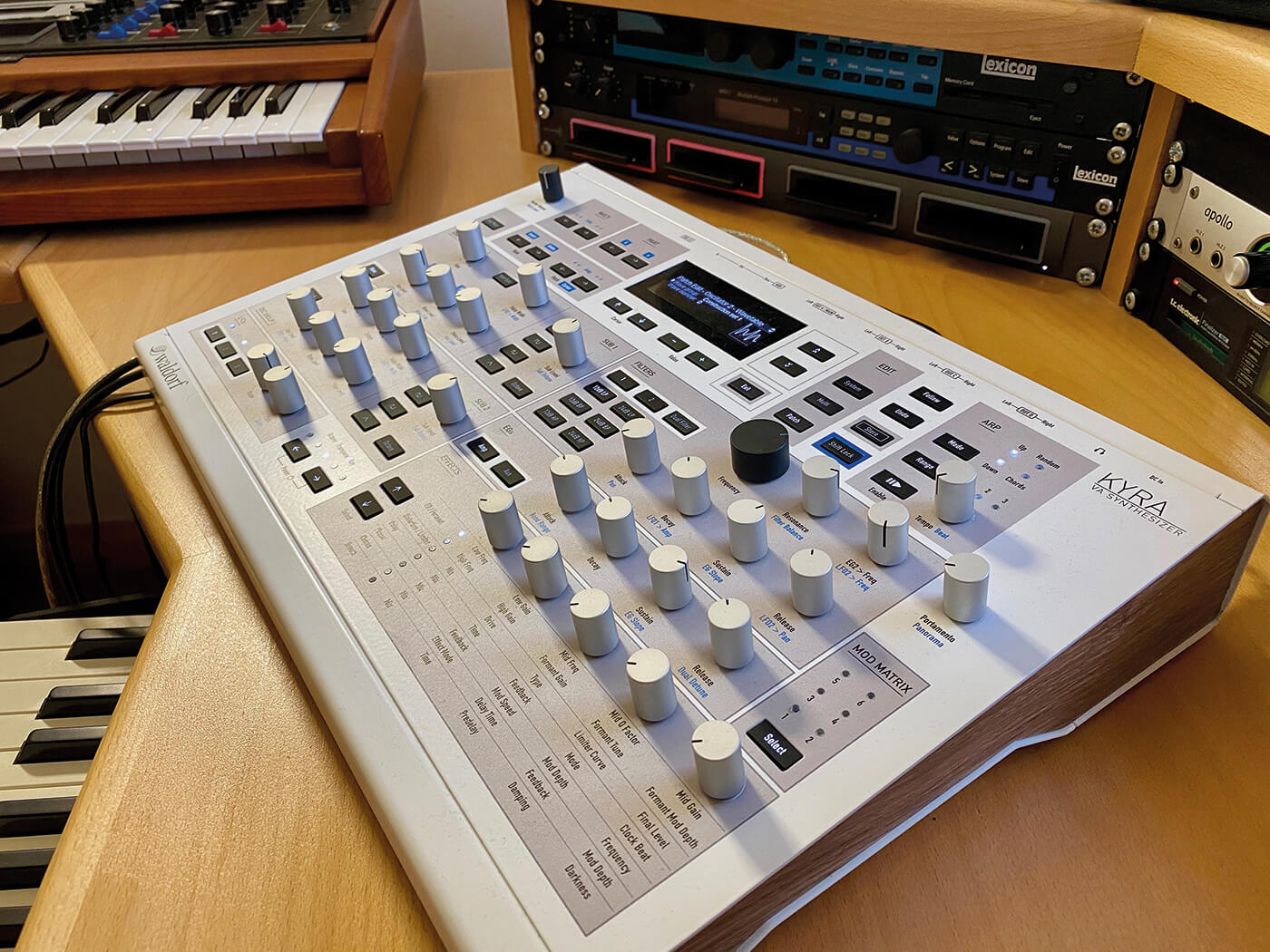
Ground up
Building a sound from an initialised patch allows for us to get familiar with the base-level architecture, which is abundant and impressive. Demonstrating its subtractive credentials, each oscillator voice is equipped with two modes of operation, switchable between Wave and Hypersaw mode. In Wave mode, it’s possible to blend saw and pulse waves, much like an old Roland Juno, but with the added ability to vary the level of each. A Sub-Oscillator component can also take advantage by adding a further saw, square, pulse or triangle into the equation, which can be placed at root pitch, or layered underneath as a sub.
Detuning can also be applied, meaning that it’s fairly easy and quick to create a rich timbral texture, which while not analogue by design, offers swathes of similarity, particularly once detuning of oscillators is applied. This tends to be a very common necessity with any synth that utilises digital control of parameters. There are a couple of additional twists to this oscillator construct; alongside the pseudo-subtractive tones, there is also a Wavetable element, where it’s possible to weave in a further timbral colour. There are a wealth of included wavetables, stemming from acoustic to outright electronic, and while it’s probably fair to say that there is not the same level of immediacy, as found within the Quantum, it adds some very interesting colour to the more traditional subtractive die-hards.
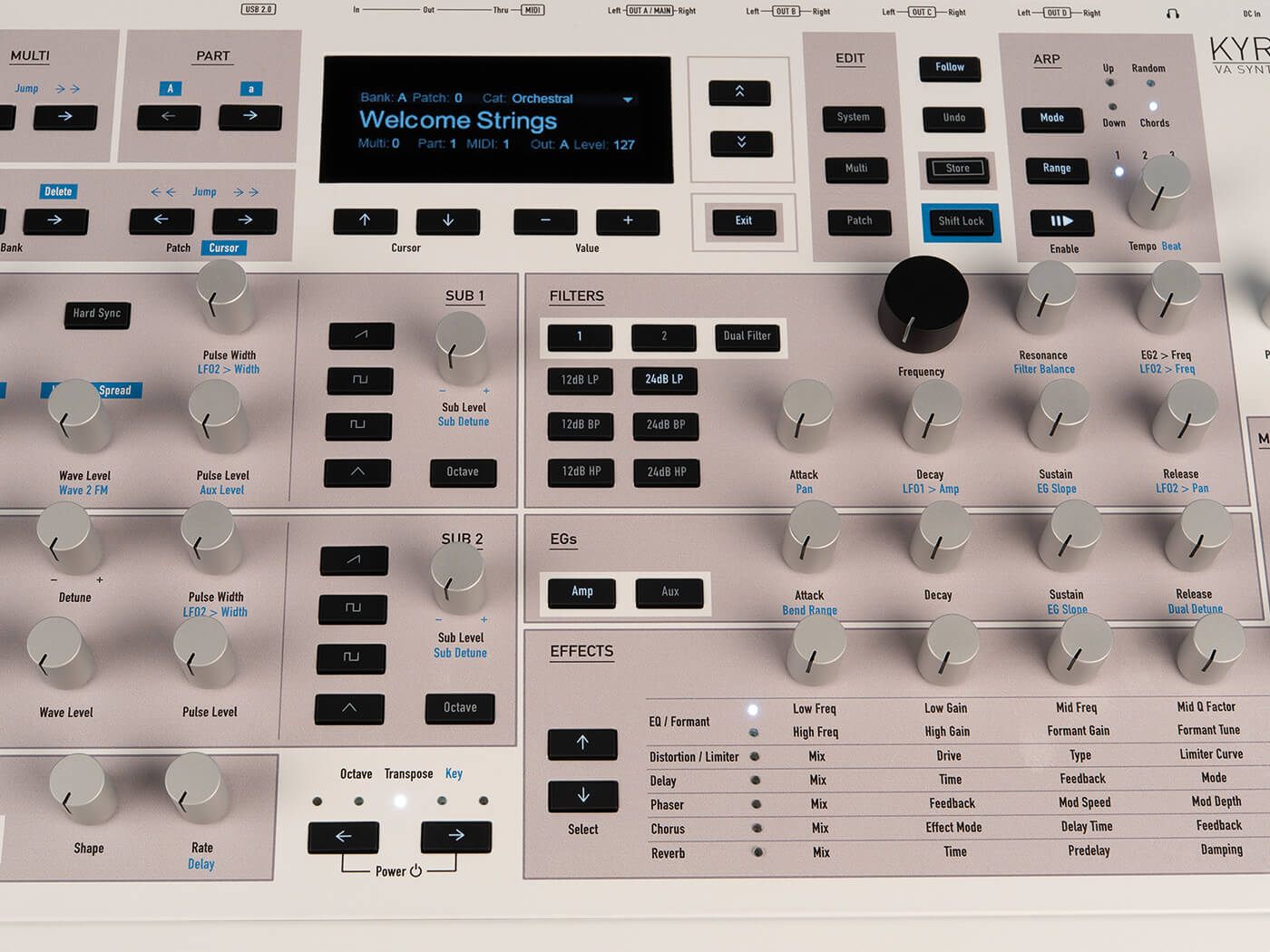
There are 4096 included Wavetable components in all, which are organised into categories, making the process of finding a particular wave type easier. The first batch of Construction Kit wavetable menus offer varying levels of typical-Waldorf harmonic colour. They don’t disappoint, although some of the more subtle colours can quickly become dwarfed by the more luscious and harmonic-laden saw and pulse tones. This is where having immediate access to the volume of each element pays real dividends, although it’s worth stating at this point that the Kyra is equipped with two oscillators, meaning that everything we have mentioned thus far is available as a second outing, and this is where you not only garner those rich and luscious tonal sources, but also convincingly detune them to create something that sounds more vintage or texturally thick, as required.
To further endorse its pursuit as a modern classic, it’s immediately possible to switch from basic Wave mode to Hypersaw mode, thanks to dedicated buttons that are located at the heart of the oscillator section. This immediately switches the oscillator based controls over to pure detuned super-saw territory, with pots being re-versioned to add intensity and spread (detuning) to the general melee. At this stage, it is also possible to add a single sub oscillator into the mix that is by default deactivated, which is probably just as well, as it sounds extremely enormous even without the undertone.
Hypersaw taming
With so much harmonic content on aural display, the use of filters is going to be essential, and thankfully there is an option for both single and dual filter operation, with a choice of six filter types. These extend to 2-pole and 4-pole versions, in low pass, band pass and high pass forms.
While in Dual Filter mode, filter balancing is possible by activating the Shift Lock, which reimagines the pots towards the blue legends located beneath each pot. This also allows for quick and easy access to some of the filter based modulatory functions, from the LFO section, while the included four-stage envelope within this section is routed to the filter cutoff by default.
The filters sound rich and sharp, with the 2-pole sounding beautifully fuzzy at the point of cutoff. Predictably, the 4-pole sounds creamier and rich, but I find myself continually drawn to the more aggressive tendencies of the 2-pole version, which sounds stunningly effective on the Hypersaw content, firmly in keeping with the traditions of this sort of synth.
Not surprisingly, the Kyra really starts to come to life when you program some movement into the timbral elements at its heart. Being equipped with three envelope generators and three LFOs, much of the stuff you are going to want is right at your fingertips, but modulation can be taken far further thanks to the six-slot modulation matrix, which allows for sources and destinations to be assigned on screen. This extends to a hugely impressive 128 LFO shapes, which offer endearing subtlety that is ripe for modulation, in much the same way that Waldorf has attended to the timbral Wavetables in the oscillator section. It’s the subtle details that really count here.
Kyra is also equipped with a healthy Effects section, which is available to each of the eight parts. As the low pass filter demonstrates the common issue of low-end drop-off upon application of resonance, having elements such as Distortion and Limiting onboard are a real boon, although they reside alongside more common elements such as chorus, delay and reverb, as well as EQ.
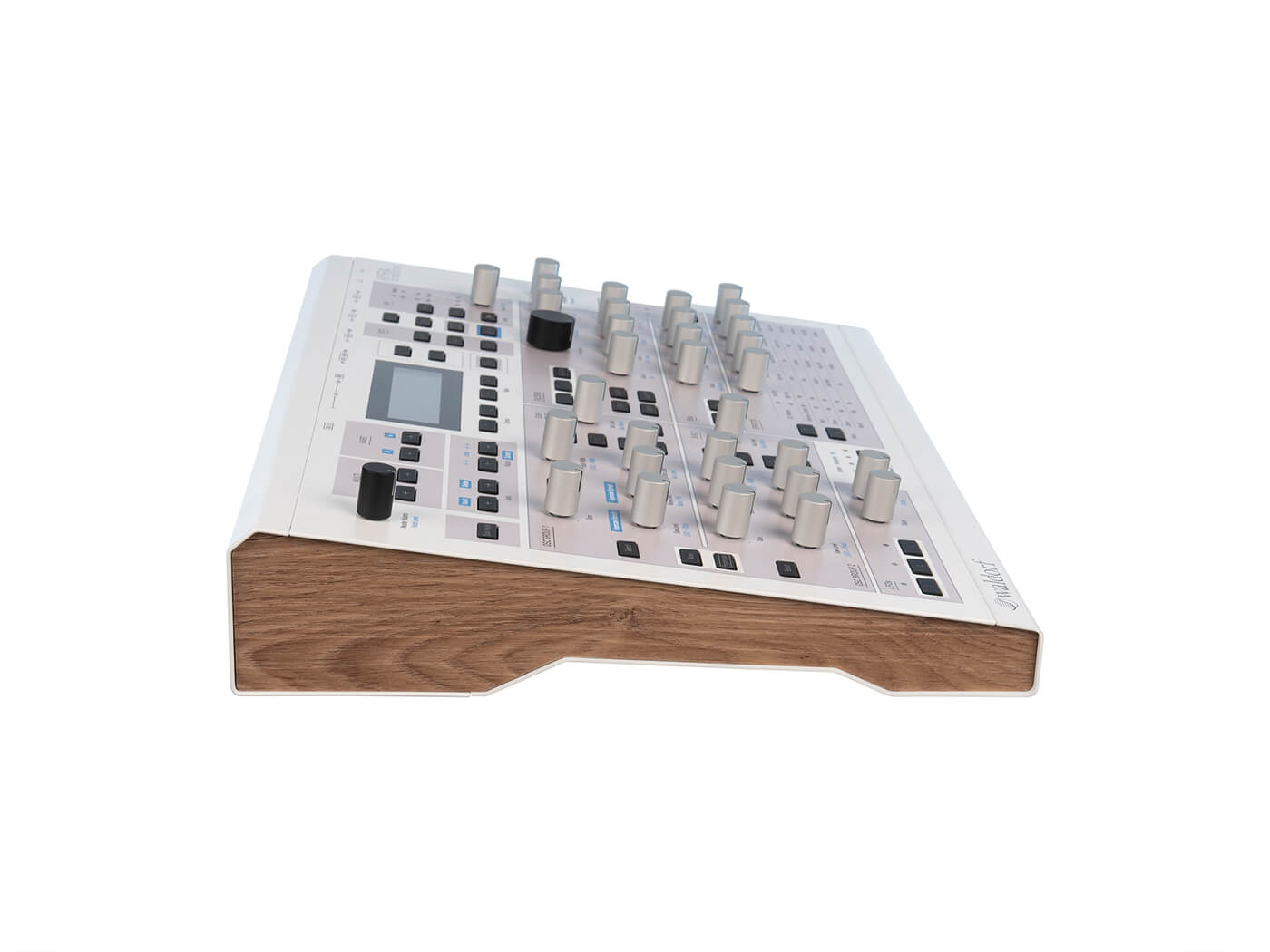
The final output
I think it’s fair to say that this feels like a slight departure for Waldorf; Kyra feels nicely different to what you might expect, packing an awful lot into a desktop package that is immediate and pleasing to work with, whether it be from a programming angle or as a playable synth. The inclusion of a fairly complex arpeggiator makes it instantly gratifying, while it packs a whole bundle of those more commercial pop sounds that we are all very familiar with.
I imagine there will be tweaks to the Kyra software over the coming months, and while I very quickly got used to its idiosyncratic style of work flow, I did miss not having a data-entry pot, being forced to press and hold the value buttons for quick scrolling which, with the number of onboard wavetables, is something you will likely need to do regularly.
But it’s a colossal sounding synth that feels perfect for commercial production. It’s at a reasonably hefty price point, which further underlines its great build quality and overall capability and sound.
Do I really need this?
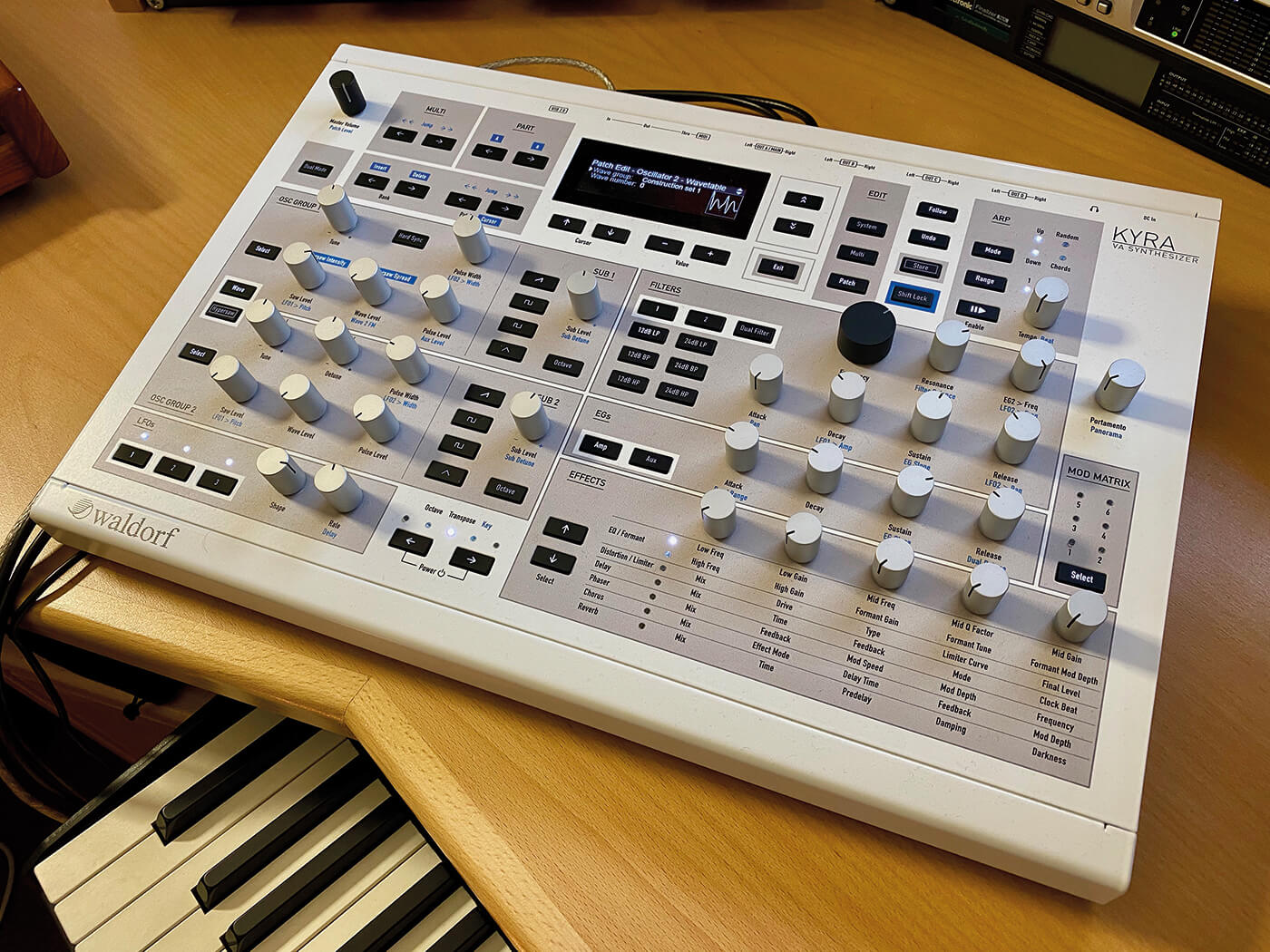
If you find yourself working in the arena of contemporary production, you’ll be very aware of the sort of stylised sounds that have infiltrated this sound world. Kyra has the capacity to produce many of these sounds with an absolute minimum of fuss, while also allowing for a great deal of creativity in exploring new territory, in a device that is well made and offers a great user experience. Its immediacy is the sort of thing we yearn for in a synth, my only slight personal preference being that if it were in a keyboard-based format, it would be even more immediate and inviting. It sounds huge, crisp and impressive, and should offer a wealth of sonic interest alongside the more obvious tonal sources.
Key features
- Virtual analogue synthesizer
- Built on FPGA (Field Programmable Gate Array) technology
- 128 voices available across 8 parts
- 26 patch banks, with 128 locations in each
- Built-in arpeggiator, with 128 preset patterns
- 9 FX available simultaneously
- USB 2.0 class-compliant connectivity, for both MIDI and Audio
- Conventional 5-pin MIDI I/O with 8 Balanced Audio outputs
Alternatives
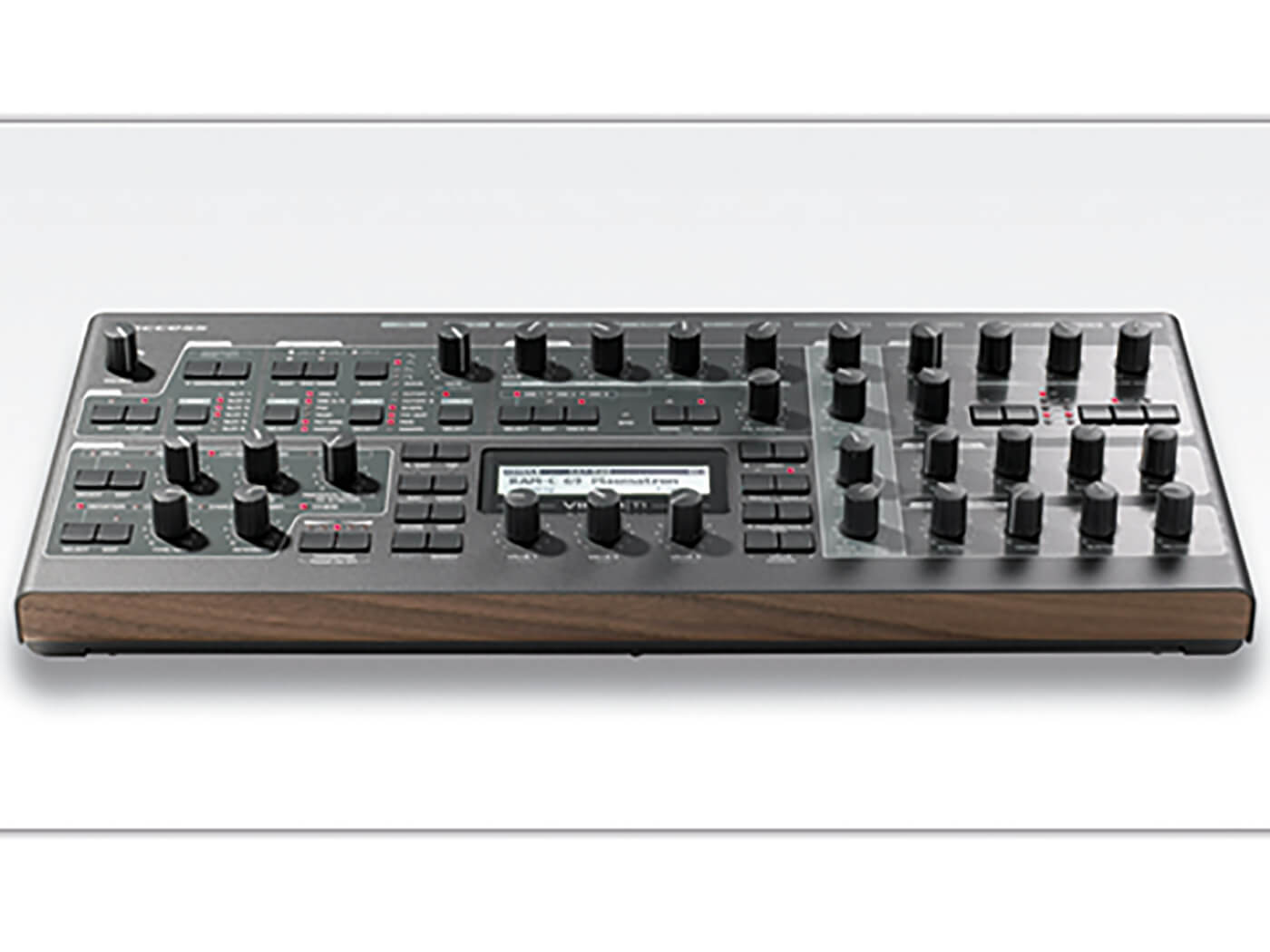
Access
Virus TI2 £1483.00 (street price)
Arguably the company that put virtual analogue hardware firmly on the map, the Virus TI2 is a desktop machine that offers everything you would expect, from single to super saws. The TI2 also offers an officially modelled MiniMoog filter, alongside all the usual FX et al.
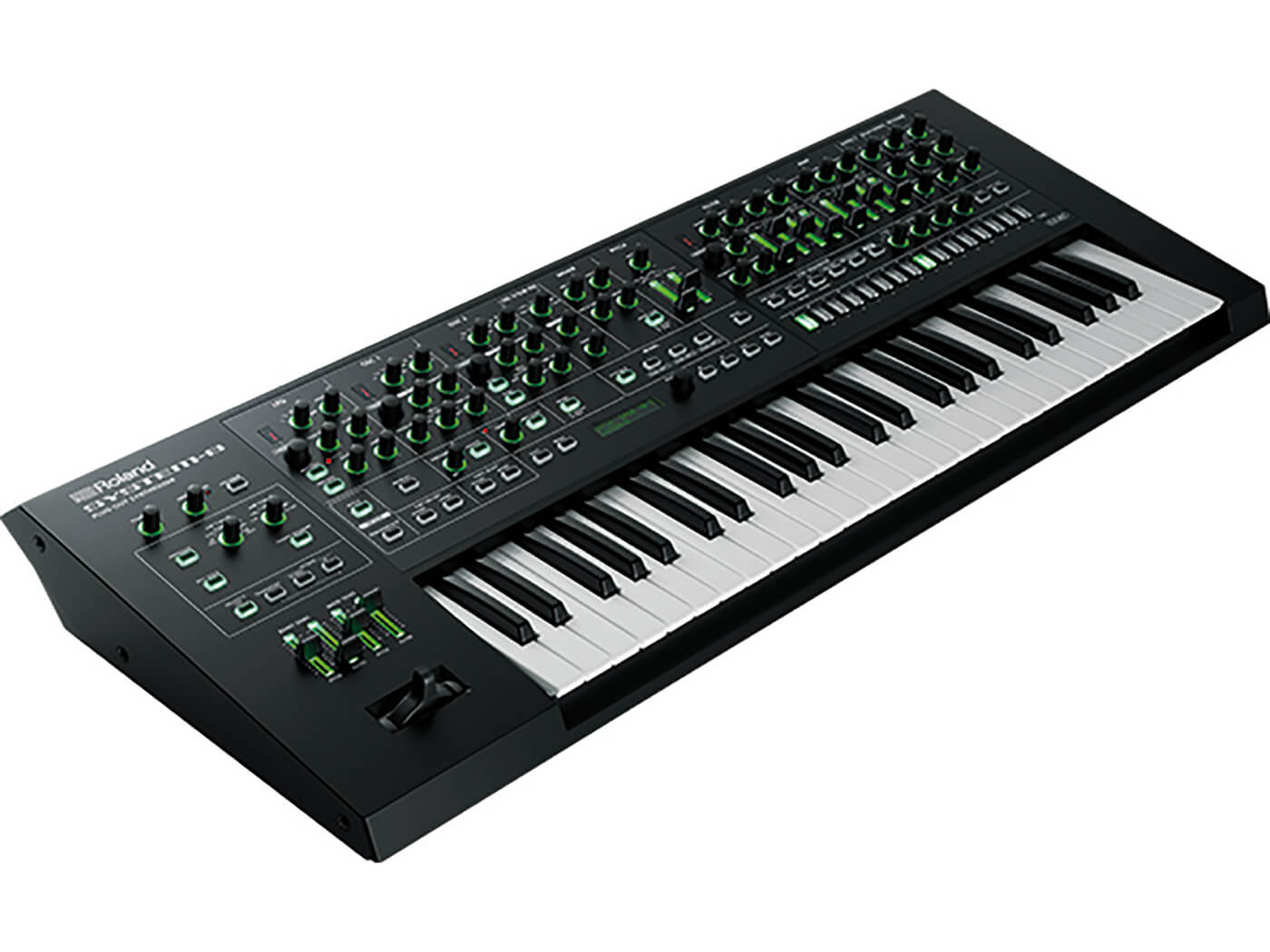
Roland
System 8 £1072 (street price)
Although not a desktop box, the System 8 is a highly impressive virtual analogue design. The internal synth offers the ubiquitous SuperSaw waves, while it can also employ the fantastically impressive Jupiter 8 and Juno models. It feels slightly garish in green lighting, but sounds highly desirable.
